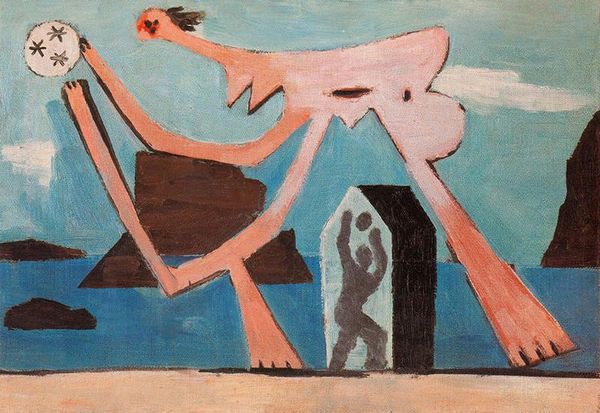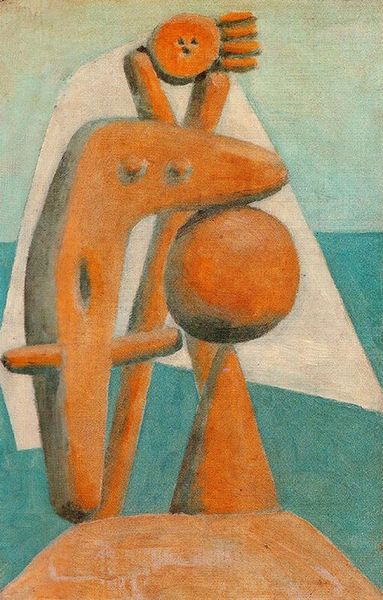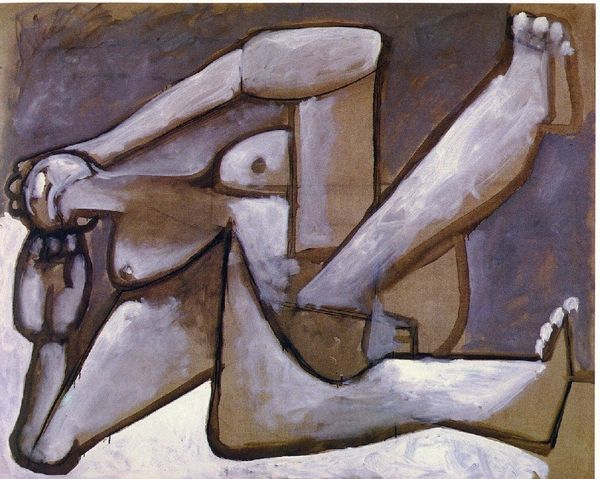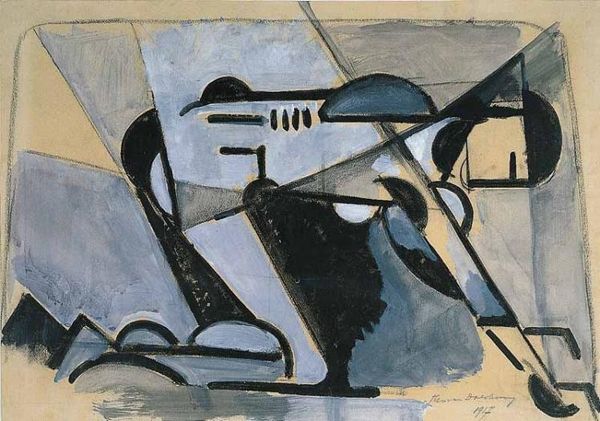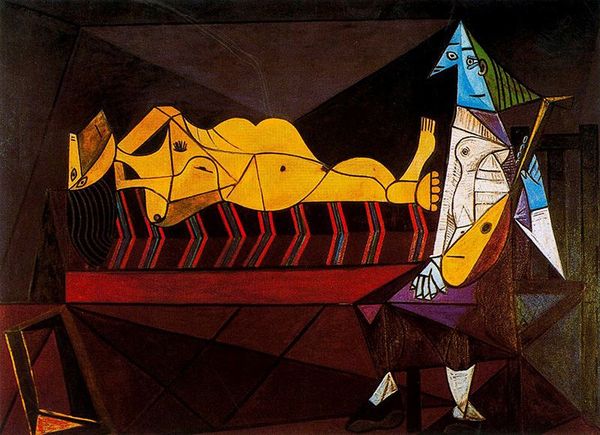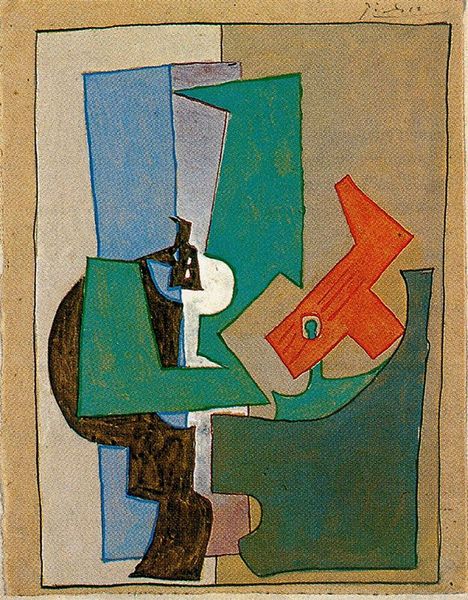
painting, oil-paint
#
cubism
#
painting
#
canvas painting
#
oil-paint
#
painted
#
figuration
#
possibly oil pastel
#
handmade artwork painting
#
female-nude
#
paint stroke
#
abstraction
#
surrealism
Dimensions: 24.5 x 35 cm
Copyright: Pablo Picasso,Fair Use
Curator: Here we have Picasso's "Bather," created in 1928, a period where he often returned to themes of the female figure, but rendered through a surrealist and cubist lens. Editor: It strikes me immediately as strangely playful, despite the distorted anatomy. The limited color palette adds a childlike simplicity, almost like a quick sketch capturing a fleeting moment. Curator: That childlike quality is key. After the intensity of his earlier Cubist explorations, Picasso, in the late 1920s, seems to revisit the theme of the bather, connecting it to broader dialogues around primitivism that echoed through art circles. This particular canvas, rendered with oil paint, emphasizes angularity and an almost schematic depiction of the figure. Editor: It’s interesting to consider how this image might be interpreted from a feminist perspective. While seemingly innocent, it's yet another iteration of the female nude through a male gaze, filtered through a modernist, surrealist sensibility. Curator: Absolutely. Context is key. The surrealist movement itself, while often presented as liberating, had its own problems regarding the objectification and idealization of women. This "Bather" contributes to that narrative, however much we might appreciate its formal qualities. Editor: The pose also strikes me as particularly…unstable. One leg stretched back like a tight rope, the other flailing as if losing balance while tossing a ball—a suggestion, perhaps, of the precarious position of women in the societal framework of his time? Curator: One could definitely make that argument, looking at it through the lens of how female bodies were often represented in art—either as passive objects of beauty or as monstrous figures subverting patriarchal norms. There’s something unsettling in how this figure teeters between the two. Editor: I’m left wondering if this 'Bather' is less about the beach and more about deconstructing the very act of seeing, challenging viewers to question how we perceive and represent the human form, especially that of women. Curator: Ultimately, Picasso leaves much open to interpretation. By stripping down the form, he compels us to look beyond the surface and grapple with the complex cultural baggage that art inevitably carries.
Comments
No comments
Be the first to comment and join the conversation on the ultimate creative platform.
